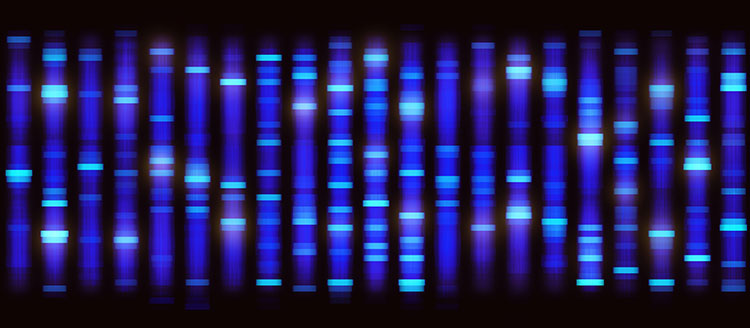
Dairy producers and genetic enthusiasts eagerly await the next release of dairy genetic evaluations on Tuesday, April 6. These triannual evaluations – on April 6, August 10, and December 7 this year – incorporate genomic data along with updated performance, or phenotypic, data to assess the genetic merit of dairy animals.

Updated values for 50 individual traits and four selection indexes will be published by the Council on Dairy Cattle Breeding (CDCB) for nearly 70 million individual animals.
Among those 50 traits are these 11 relatively new and economically important traits that have been launched in the past four years.
- Cow livability
- Gestation length
- Displaced abomasum
- Hypocalcemia
- Ketosis
- Mastitis
- Metritis
- Retained placenta
- Earlier first calving
- Feed saved
- Heifer livability

Genomics opens more doors
The development of several newer traits has been possible through genomics. There are many traits that are critically important, yet difficult and expensive to measure. Genomics has reduced the need for as many phenotypes, thereby allowing measurement for these challenging traits.
Phenotypes can be collected and measured on a small, strategically chosen group of genotyped animals. Marker effects are calculated based on the reference population. Then, genomic breeding values can be predicted for all animals that have been genotyped, including animals without any measured phenotypes.
An excellent example is the new trait that measures feed efficiency. In December 2020, Feed Saved was introduced as a new tool to predict feed efficiency of individual Holstein animals, enabling producers to save on feed costs and help reduce dairy’s environmental footprint. Cows vary in their ability to convert feed to milk, and genomic tools and data technologies now allow us to identify and select for animals with that genetic advantage. The goal is to identify specific cows that eat less than expected (save feed) while maintaining production and body condition.
The collection of the necessary cow records (like feed intake, body weight, and milk production) and genotypes has been possible through collaboration between CDCB, USDA, several universities, and the Foundation for Food and Agriculture Research. The initial Feed Saved evaluations were based on a reference population of more than 6,300 Holstein cows in U.S. research herds. With the Feed Saved evaluations published April 6, more U.S.-based data will be included as well as feed intake records from two Canadian research herds. This phenotype exchange is part of a larger collaboration between CDCB and Lactanet in Canada. This will result in a slight uptick in reliability for Feed Saved, and we will continue to add data on more cows to achieve that end goal.
Breeding healthier cows
Six traits that measure the genetic resistance to common dairy disorders were first published by CDCB for Holsteins in April 2018 and for Jerseys in April 2020. These genetic evaluations can help alleviate six costly health conditions through breeding for resistance against displaced abomasum, ketosis, mastitis, metritis, hypocalcemia (milk fever), and retained placentas.
The phenotypic information is available through health events recorded for cows in herds that report through Dairy Herd Information (DHI). For the April 2021 evaluations, CDCB received more than one million new health records from data providers. Also, the health traits will be enhanced with a better definition of the contribution for animals with incomplete pedigrees.
Five million genotypes
The engine of the U.S. dairy evaluations is the national dairy cooperator database that is managed by CDCB.
A new milestone was achieved on March 5, 2021, when the 5 millionth individual genotype was recorded in the U.S. database – 13 years after the first U.S. Holstein sires were genotyped in 2008. In the past 12 months, 1 million animal genotypes have been submitted to the CDCB. That rapid increase is driven by widespread adoption of genomic testing females to make mating, culling, and other herd management decisions.
This database of both genotypes and phenotypes has grown to be the world’s largest animal database, through collaboration among many producer-driven organizations in the U.S., along with international partnerships. A sophisticated process is in place to ensure high-quality data is entered into the database.
This combination of data quantity and quality provides increasingly accurate genetic evaluations used by dairy herds around the U.S. and in the more than 100 countries that import U.S. genetics.








